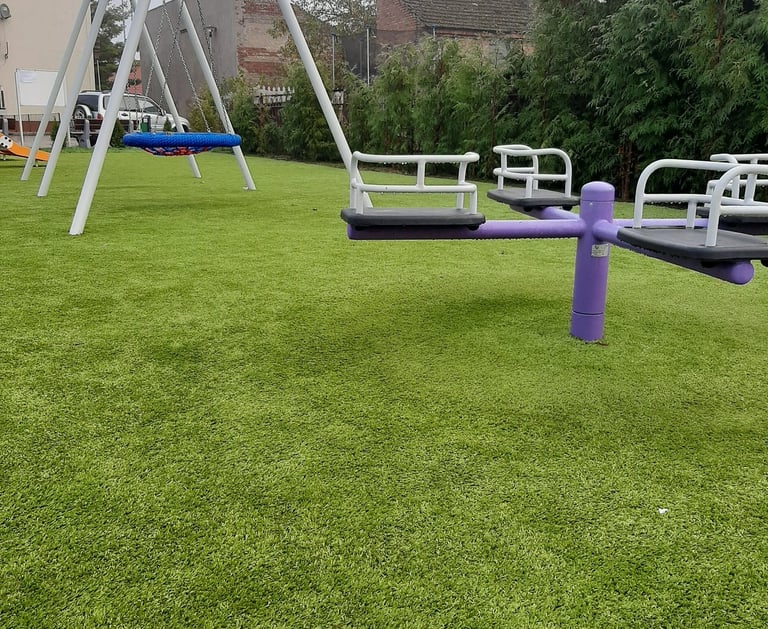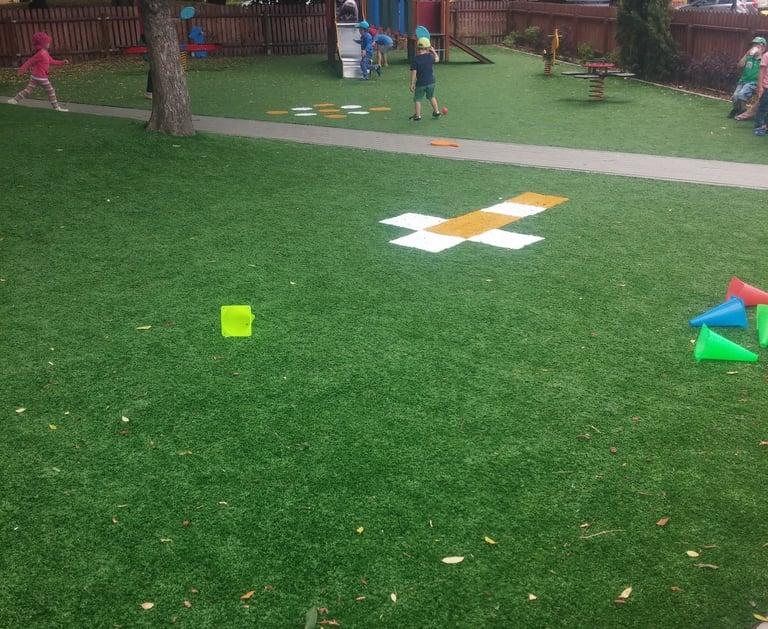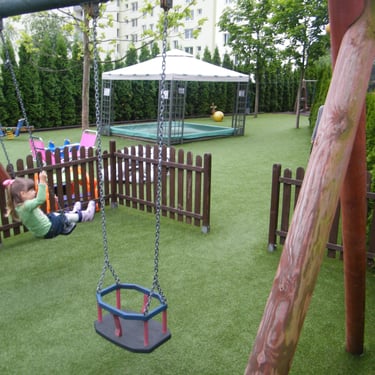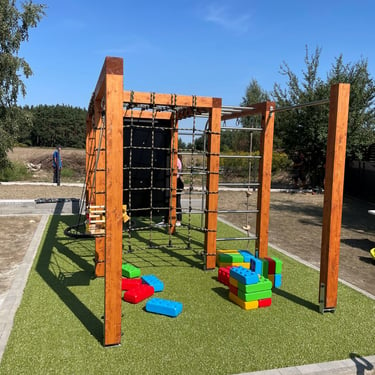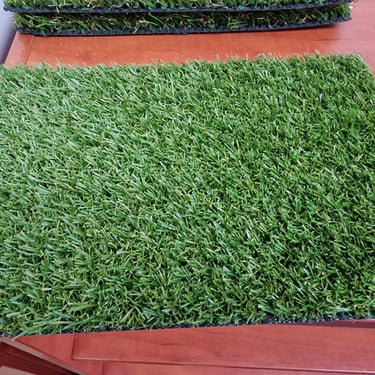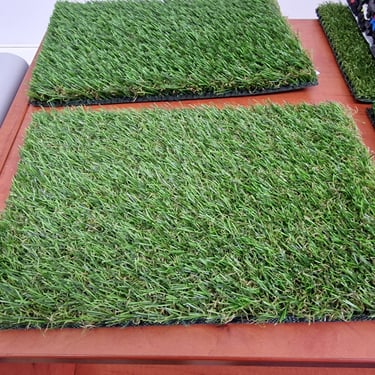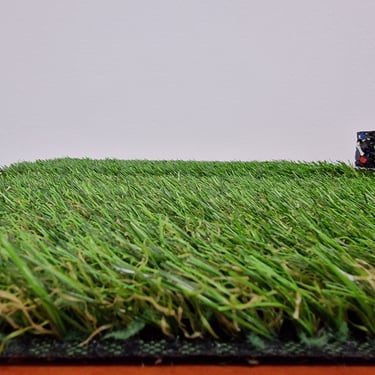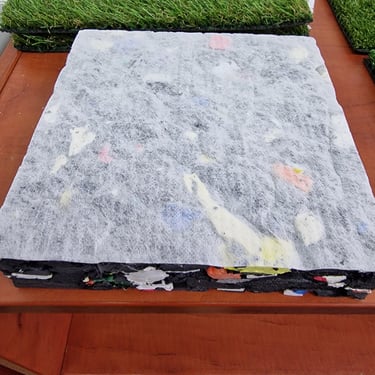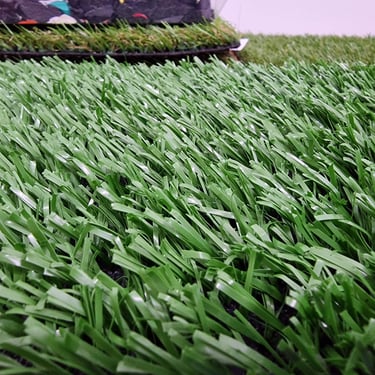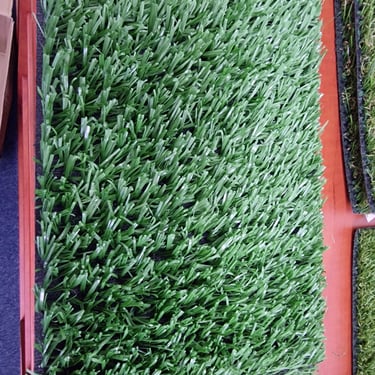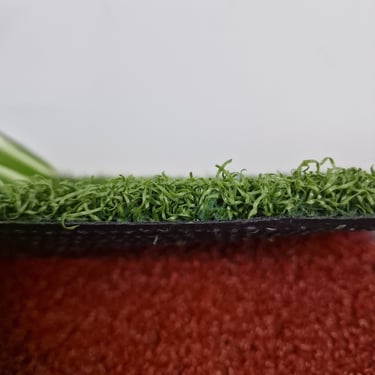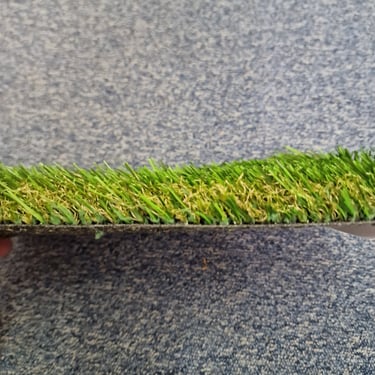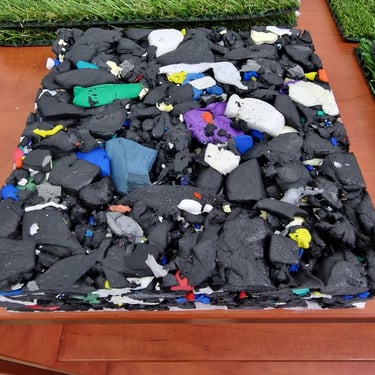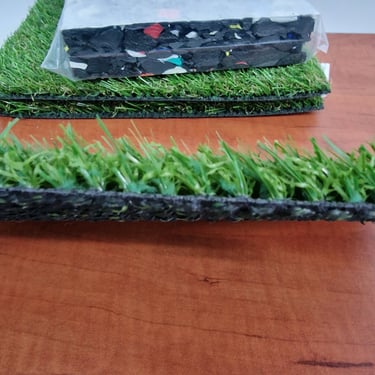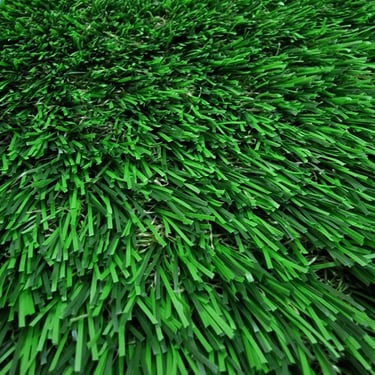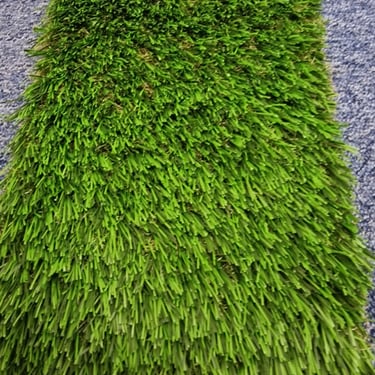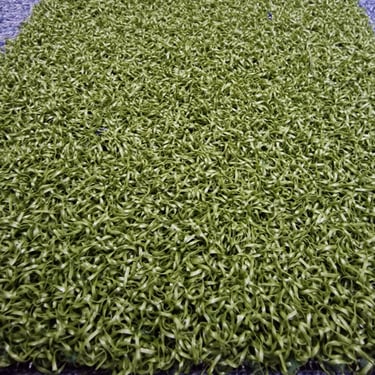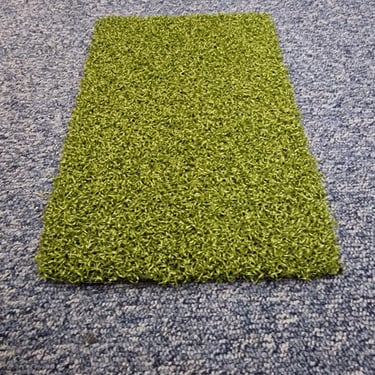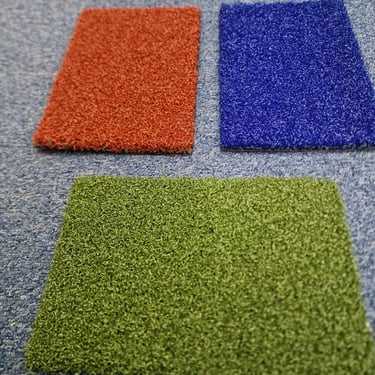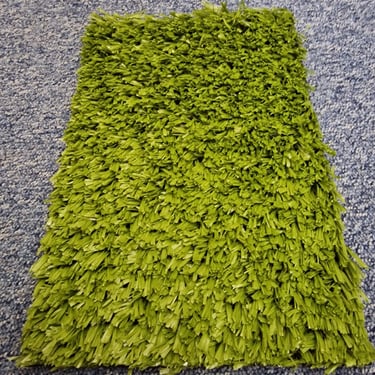Artificial turf is a modern solution used in playgrounds and multi-purpose sports fields as a safe surface. It consists of two main components: the curly fiber grass and the recycled base. The thickness of the base depends on the critical fall height for the specific play equipment on the playground, typically ranging from 18 to 90 mm, and the HIC (Head Injury Criterion) values fall within the range of 1.2 to 3.1 meters.
The grass itself, without the base, is also used to renovate old playgrounds that have poured or tiled surfaces. It is a cost-effective solution that allows for surface updates while preserving aesthetics and functionality.
The installation process and preparation of the ground for artificial turf are as follows:
Clearing the area: Removing vegetation and unnecessary organic materials from the site to ensure a level surface.
Drainage layer: A layer of sand, up to 10 cm thick, is placed on the prepared ground to facilitate water drainage from the surface.
Stabilizing layer: A compacted layer of aggregate, up to 10 cm thick, is placed on top of the drainage layer. This layer aims to stabilize the ground and maintain a uniform sub-base.
Cushioning pad: The next step is to install the recycled cushioning pad of the appropriate thickness, depending on the critical fall height. This pad provides the safety properties of the surface.
Artificial turf: The artificial turf with a fiber length of 24 mm is installed on top of the cushioning pad. The turf is secured to the sub-base.
Silica sand infill: The final step involves infilling the turf with silica sand, which helps to keep the turf in place and provides stability.
Through this installation and ground preparation process, artificial turf becomes a durable, aesthetically pleasing, and safe surface, perfect for use in playgrounds and multi-purpose sports fields.
